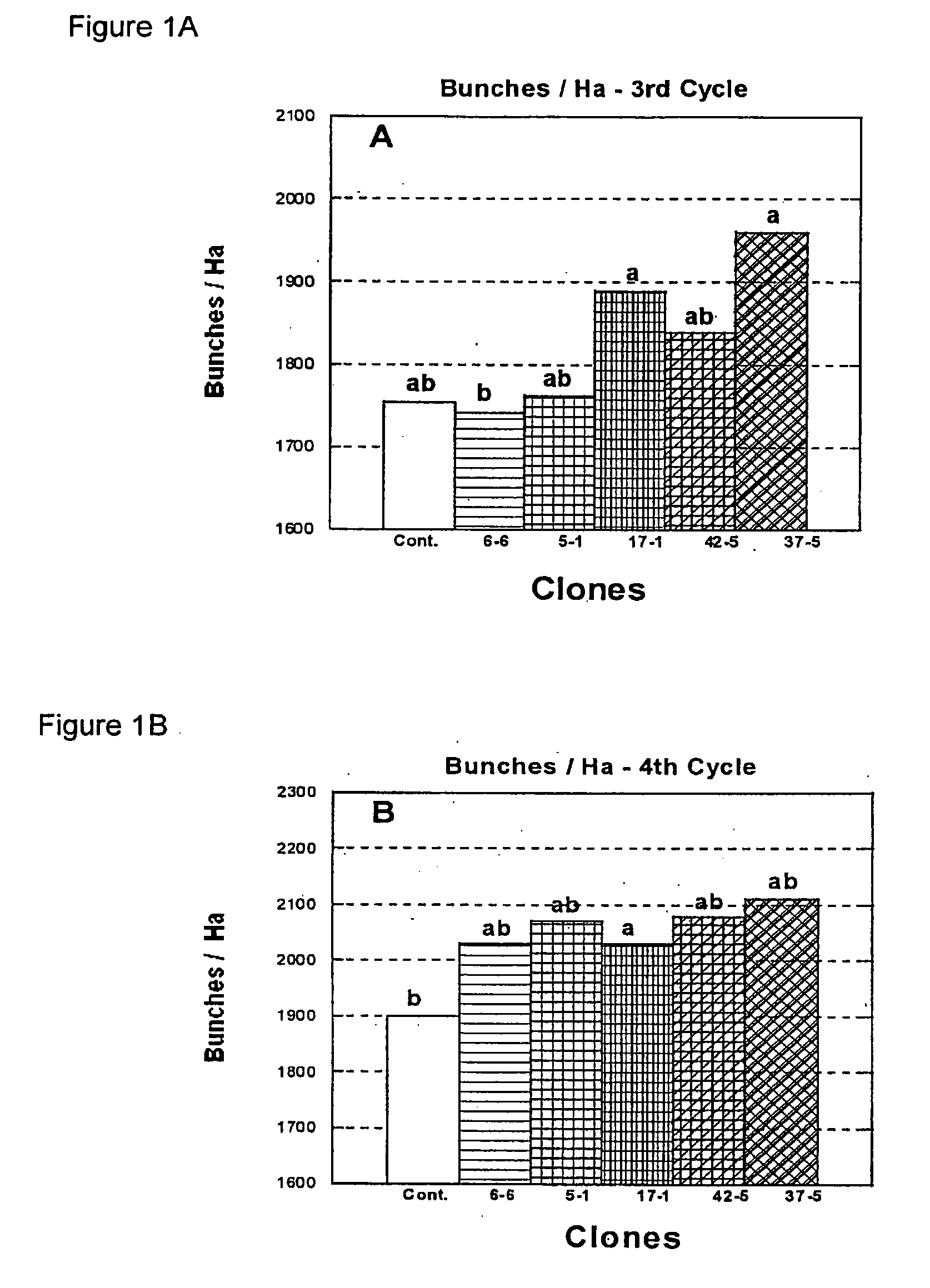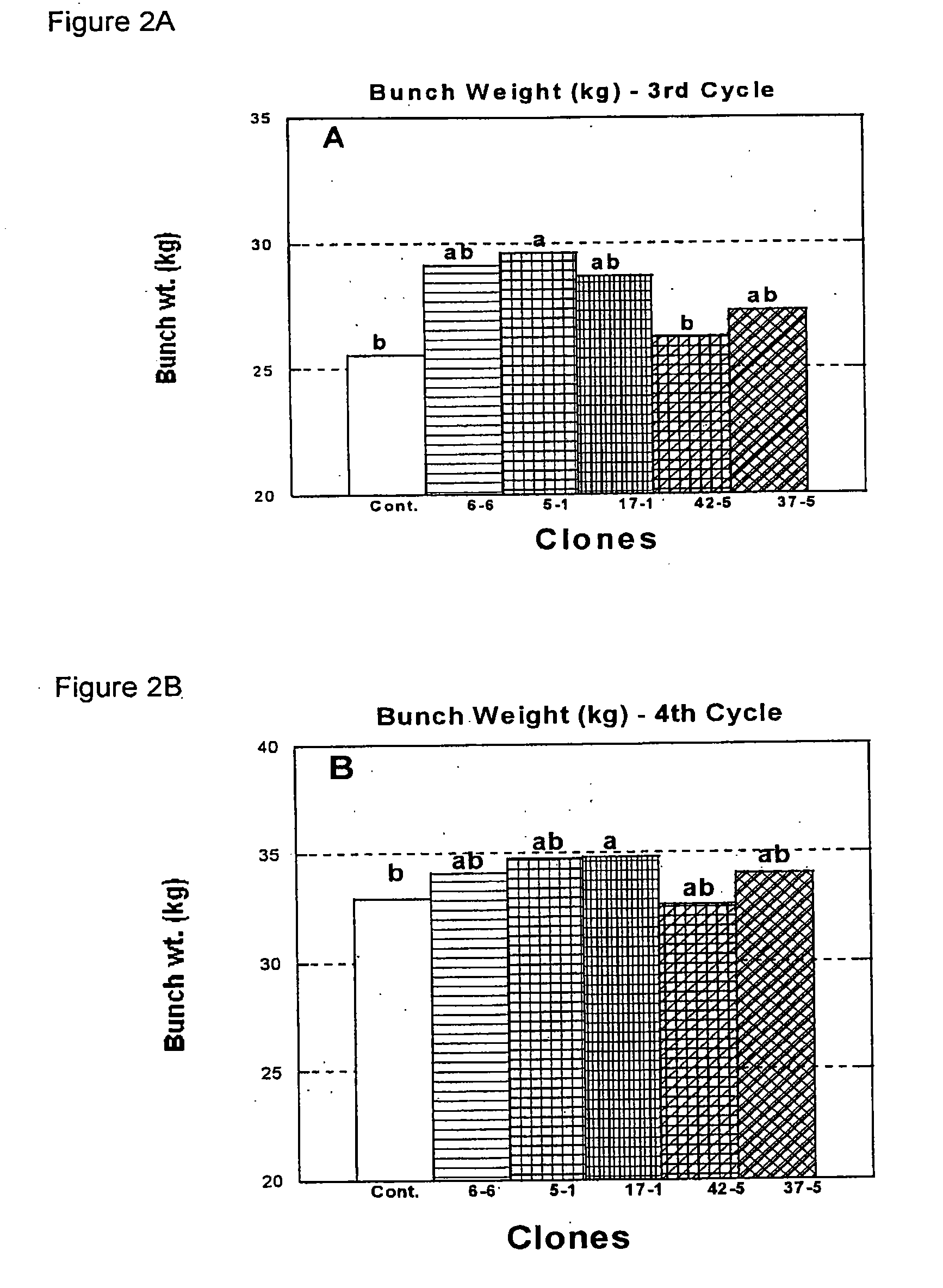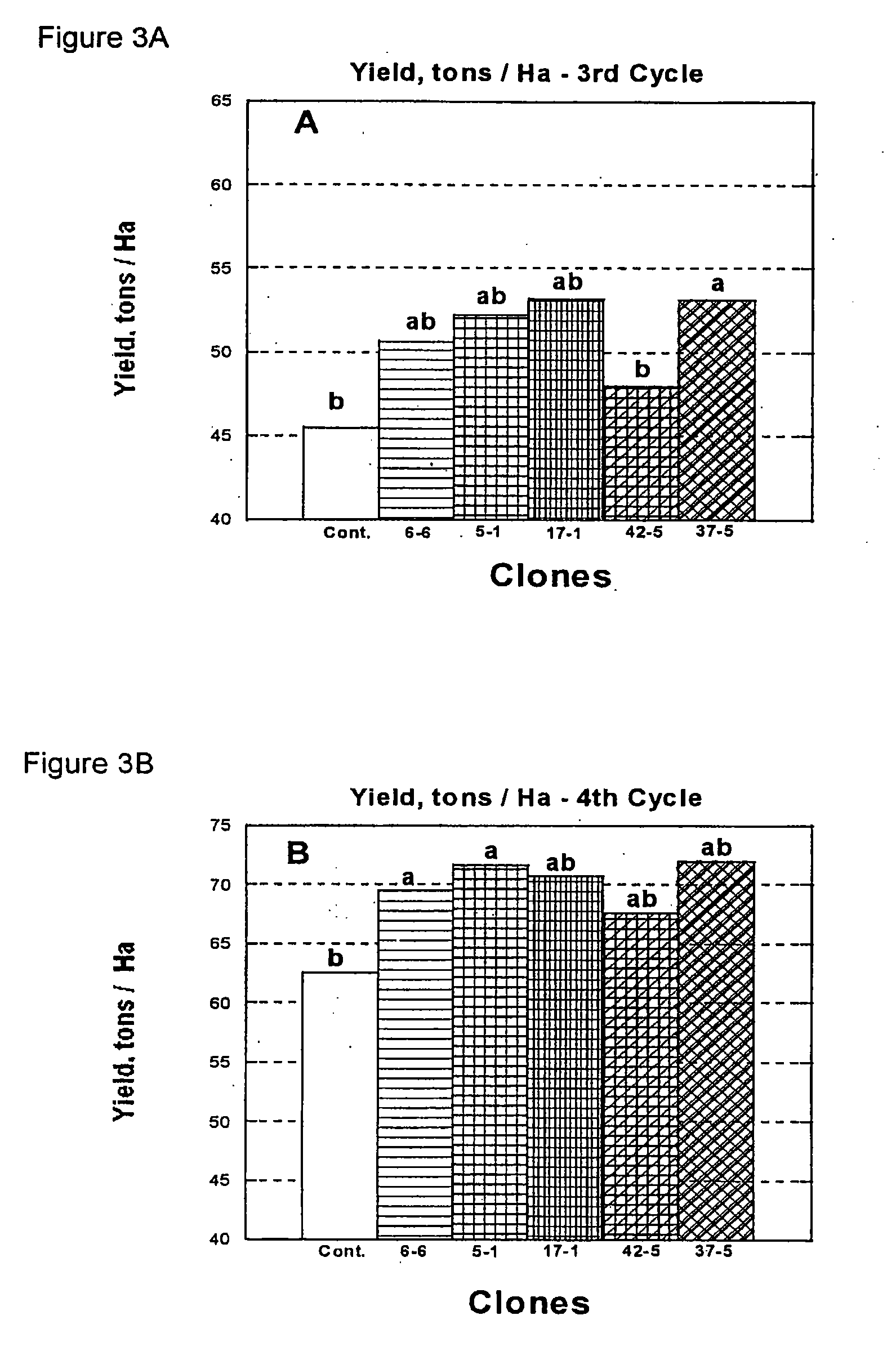Process for selecting banana clones and banana clones obtained thereby
- Summary
- Abstract
- Description
- Claims
- Application Information
AI Technical Summary
Benefits of technology
Problems solved by technology
Method used
Image
Examples
example
Initial Evaluation
[0050]The initial selection was performed on 300 mats of ‘Grande Naine’ produced from six mother clones, propagated by meristem culture. The in vitro cultures were initiated from apical meristem explants and were propagated and rooted as described [Cronauer S. S. et al.: Annals of Botany 53 (1984) 321-8]. Hardening, potting and growth prior to transfer to the field were carried out as practiced commercially by Rahan Meristem. After three months of ex vitro hardening, the plants were planted in the Western Galilee Banana Experimental Station. Mats were arranged in wide “tram-line” paired rows [Robinson J. C.: In: Gowens (ed). Bananas and plantains. Chapman & Hall. 1995. pp 35-36]. The distance between each pair was 6.0 m and between rows within the pair 3.0 m. The planting distances within the row were 2.7 m. Thus, the total density was 832 mats / ha. Drip irrigation, fertilization and all other agrotechnical procedures were performed according to standard methods pra...
PUM
 Login to View More
Login to View More Abstract
Description
Claims
Application Information
 Login to View More
Login to View More - R&D Engineer
- R&D Manager
- IP Professional
- Industry Leading Data Capabilities
- Powerful AI technology
- Patent DNA Extraction
Browse by: Latest US Patents, China's latest patents, Technical Efficacy Thesaurus, Application Domain, Technology Topic, Popular Technical Reports.
© 2024 PatSnap. All rights reserved.Legal|Privacy policy|Modern Slavery Act Transparency Statement|Sitemap|About US| Contact US: help@patsnap.com










